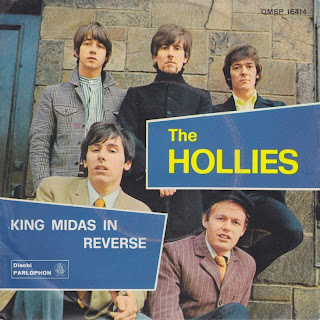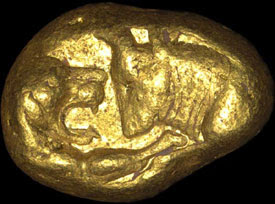Good times, bad times
You know I’ve had my share
I’m pretty sure the New York Yankees were in a foul mood when they flew out of St. Louis last Sunday after dropping three close games to the Cardinals.
I’m absolutely sure that I was in just as foul a mood after watching those games.
* * * * *
In 1978, Bucky Dent – a woeful hitter who was batting ninth that day – shocked the world by hitting a three-run home run that gave the Yankees the lead in their one-game playoff with the Boston Red Sox after both teams had finished the regular season tied for first place in the American League’s Eastern Division.
The Yankees held on to that lead, completing their unprecedented comeback from what was once a 14-game deficit. Ever since, the fans of the choking-dog Red Sox have referred to the Yankee hero as “Bucky F*cking Dent.”
Last Sunday I witnessed a shocking home run by a major-league shortstop whose hitting was even more pitiful than Dent’s.
 |
| Paul F*cking DeJong striking out |
That home run – by the man I will hereinafter think of as “Paul F*cking DeJong” – was the absolute nadir of my trip to St. Louis last weekend to see the Yankees-Cardinals series. It may have been the absolute nadir of my entire life.
* * * * *
The Yankees and Cardinals played three games last weekend. The Friday and Saturday games were pretty bad. But Sunday’s game was absolutely horrific.
I’m prone to hyperbole in my 2 or 3 lines posts – to put in another way, I lie a lot – but “absolutely horrific” is no exaggeration.
For one thing, there was the weather. I checked the temperature about an hour after the game began, and it was 95 degrees – but thanks to the humidity and lack of a breeze, my weather app said that it felt like a mind-boggling 108 degrees.:
I was sitting a few rows behind the first-base dugout, which meant that I was completely exposed to the sun for most of the game. By the 3rd inning, every single square inch of my shorts and shirt was wet with perspiration – you would have thought I had gotten caught in a sudden summer shower sans umbrella if you had seen me.
* * * * *
Every one of the three Yankees-Cardinals confrontations last weekend was a sellout – the attendance figures for each game easily exceeded the stadium’s official seating capacity.
In fact, the Saturday night game broke the stadium’s all-time attendance mark. The new Busch Stadium opened in 2006, and has hosted an All-Star Game and several dozen postseason games – including ten World Series games – but last Saturday night’s contest attracted more fans than any of those games. (Such is the magnetic attraction exerted by the greatest professional sports franchise the world has ever seen.)
The Sunday game drew almost as many spectators, which ensured that there would be l-o-n-g lines at the concession stands and bathrooms – and also guaranteed that there would be no vacant seats next to you.
Sure enough, my section was stuffed with people – most of whom were not only sweaty and smelly, but also packed enough extra pounds that I had even less elbow room than I had had on my sold-out Southwest Airlines flight from Washington, DC to St. Louis last Friday.
* * * * *
Other than Paul F*cking DeJong’s home run and the beastly weather conditions, the worst thing about the Sunday game was that it lasted four hours and 25 minutes – making it the longest nine-inning MLB game of the 1600-plus contests played so far this year.
If the Yankees had won, I wouldn't be complaining about the heat and the interminable length of the contest. Hell, if the Bombers had fallen behind by a sufficiently large margin that I could have abandoned the game early without worrying about missing something, I would have been OK.
But my boys hung close throughout the excruciatingly tedious game, never falling behind by more than a run or two until the very end, when DeJong broke open the game with a three-run roundtripper in the bottom of the 8th.
I suppose I should be grateful to him. In the top of the 9th inning, Yankee leadoff hitter D. J. LeMahieu knocked one out of the park. If DeJong had not homered, LeMahieu’s blast would have tied the game, and we would likely have been subjected to an hour or two of extra-inning torture.
* * * * *
Serious baseball fans will know that Paul F*cking DeJong has been the Cardinals’ primary shortstop since 2017.
He was an above-average hitter in 2017 and 2018, an average hitter in 2019, and a below-average hitter in 2020 and 2021.
But DeJong really stunk up the joint this season. His batting average as of May 8 was .130, which I’m guessing was the worst batting average of any everyday player in either league. Not surprisingly, the Cardinals exiled him to their Memphis minor-league team at that point, and kept him there for most of May, June, and July.
 |
| Paul F*cking DeJong striking out again |
He was only 3-for-16 with seven strikeouts in his first week back with the Redbirds. But then the Yankees – who had the best record in baseball at the time – came to St. Louis. Suddenly Paul F*cking DeJong became Babe F*cking Ruth.
I was at the first game of the Yankees-Cardinals series last Friday. After striking out in his first two at-bats, DeJong came to the plate in the 8th inning to face the Yankees previously unhittable All-Star closer, Clay Holmes, with two outs and two men on base and the New Yorkers clinging to a 3-2 lead.
DeJong swung late on the first pitch he saw from Holmes, slicing a seeing-eye liner to right field that landed barely fair. Suddenly, the Cardinals led 4-3 – which was how the game ended.
That double raised DeJong’s batting average from .137 to a gaudy .146. He went 0-for-3 on Saturday, but on Sunday, he walked twice and hit a double before crushing the three-run home run in the penultimate inning and turning a 9-8 nail biter into a 12-8 laugher.
If I had had a fifth of gin and a bottle of Ambien handy, I might have shuffled myself off this mortal coil for once and for all at that point. Fortunately for all you fans of 2 or 3 lines – who wouldn’t know what to do without my wildly popular little blog – I didn’t have access to said gin and Ambien.
* * * * *
The extraordinarily slow pace of the Sunday game was largely due to the fact that no fewer than 11 pitchers pitched in it – most of them entering in the middle of an inning, which necessitated leisurely mound conferences, long saunters in from the bullpen, and lots of warmup pitches.
Those 11 pitchers threw a mind-boggling total of 380 pitches — of which 144 were balls. (Watch the box scores for the next few weeks, and let me know when you see a nine-inning game with 144 or more balls. I have a feeling I won’t be hearing from you.)
The Cardinals’ starting pitcher, a wily (and whiny) veteran named Adam Wainwright, lasted only four innings. He threw 111 pitches in those four innings – enough pitches to get a really good pitcher through an entire game – and yielded eight hits, four walks, and six runs. It was a terrible performance . . . but the Yankees starter was even worse.
* * * * *
The Yankees outhit their opponents 16 to 11 on Sunday, but left 12 men on. Despite their inefficiency with runners on base, they might still have won if not for the home plate umpire, who had no clue what was a ball and what was a strike.
Click here to read an article from USA Today that says that the umpire missed 20 calls in the first six innings alone – the worst of which was calling a ball that was over four inches off the plate a strike. (If he had called it what it was – a ball – it would have resulted in a bases-loaded walk instead of a strikeout. So it clearly cost the Yankees at least one run, and might have cost them more.)
According to UmpScorecards.com, that umpire’s inaccuracy cost the Yankees 3.01 runs – and the Cardinals won by three. Imagine that . . .
* * * * *
Getting swept by the Cardinals was particularly upsetting because they aren’t a very good team.
Sure, they will likely make it to the playoffs this year – largely because they play in the weakest division in baseball. (Three of the four other teams in their division – the Pirates, Reds, and Cubs – are the 2nd, 3rd, and 4th worst teams in the entire National League. Each is 20 games or more below .500.)
The Cardinals have two outstanding hitters, Nolan Arenado and Paul Goldschmidt. And their rookie DH, Brendan Donovan, is pretty good at getting on base – although he has no power at all. (He’s hit only two homers in 81 games.)
But the rest of their hitters range from pretty bad to absolutely terrible. The batting averages of the remaining players in the Sunday lineup were .256, .244, .230, .225, .208, and .157 – and none of them had more than seven home runs. (Yankees slugger Aaron Judge had twice as many home runs single-handedly as those six players plus Donovan had combined.)
 |
| Aaron Judge is a very large man |
“If the Yankees are so good and the Cardinals are so bad, how did the Cardinals sweep the series?” you ask.
Baseball teams are usually quite streaky – they get hot for a while, and then they go cold.
A wise man once pointed out that a team is never as good as it looks during a winning streak, and never as bad as it looks during a losing streak. The Yankees weren’t as good as they looked in the first half of the year, when they were winning at a pace that would have broken records if they had been able to maintain it for a full season. And they’re not as bad as they looked over the past two weeks – including last weekend’s series in St. Louis.
It didn’t help that the Yankee lineup was missing two of their most dangerous batsmen, Giancarlo Stanton and Anthony Rizzo, who had combined for 51 homers and 127 RBIs so far this season. But even without those two bats, the New York hitters were actually superior to their opponents – the sweep was more the result of bad luck than underperformance. (The Yankees outhit the Cardinals 28 to 21 over the weekend.)
* * * * *
Enough whining about the games. Let me shift gears and talk about the non-baseball aspects of my St. Louis trip for a bit.
I’ve never flown anywhere just to watch a baseball game before, and I wouldn’t have flown to St. Louis just to see the Yankees take on the Cardinals.
But when my sister (who is a huge Cardinals fan) and I were together in June for my late mother’s memorial service, she mentioned that the Yankees were coming to St. Louis to play the Redbirds.
That doesn’t happen often. (Because the two teams play in different leagues, the Yankees come to St. Louis only once every six years.) So I said – less than half seriously – that maybe we should meet in St. Louis for the weekend and see the games together. She thought that was a great idea.
I’m fortunate to have the time and the means to make a trip like this, but it’s not the kind of thing I usually do – I’m not really a spur-of-the-moment kind of guy.
Also, there have been a lot of horror stories about flight delays and cancellations recently. It would have been awful if we had bought tickets to these games – which weren’t cheap – and then not be able to attend all of them because one of our flights got delayed or cancelled.
I was still on the fence a couple of weeks before the games were scheduled to be played. But my two best high-school friends, who I hadn’t seen in years, both live in St. Louis. I called them, and both were amenable to a get-together if I did decide to make the trip.
I made plane reservations the next day.
* * * * *
One of my friends invited all of us to come to his home Saturday afternoon for lunch. I figured we’d have time for a nice visit before my sister and I had to leave for the Saturday night game. (We didn’t purchase tickets to that game in advance, figuring we could either get them online at the last minute, or just watch the game on the oversize TV monitors at Ballpark Village, a large outdoor restaurant and entertainment complex adjacent to the stadium.)
We ended up hanging around with my friends so long that we almost missed the game entirely. We made it to a nearby sports bar just in time to watch the last couple of innings. (The Yankees lost 1-0, so we hadn’t missed much.)
 |
| Paul F*cking DeJong striking out yet again |
Why didn't we leave earlier as we had planned? This will sound odd, but it was almost as if there was some force field preventing us from leaving my friend’s house that evening. Even after we finally got up from his dining-room table and headed outside to our cars, we all ended up standing around in the driveway and talking for another half an hour or longer.
I often have trouble ending a conversation. I sometimes keep one going single-handedly – or, more accurately, single-mouthedly.
But it wasn’t just me doing the talking that evening – my friends also seemed reluctant for the gathering to end. We kept dredging up names from our high school days, and retelling stories we had told each other multiple times in the past.
I have a lot of friends from high school, from law school, from my various jobs, and from other contexts that I have neglected to keep in regular touch with. When I do finally get together with these people, it’s always a delight. So why do I repeatedly let five years, or ten years, or even longer pass before belatedly making contact, and then try to catch up for years of lost time in the course of a single lunch or dinner?
It's partly because I’m a creature of inertia. I follow my daily routine – which is mostly a solitary one – and all too rarely remember to yank myself out of my rut by the scruff of my neck.
* * * * *
What’s true of friends is truer of family, of course.
My sister (and only sibling) is seven years younger, so she was just a kid when I left home to go to college. Since then, we’ve never lived in the same city – currently I live in the Washington, DC area, while her home is in Texas.
Our visits over the years were mostly limited to a few days around Christmas, trips to one-off events (like weddings), or brief get-togethers at our parents’ home. Now that both of our parents have died, we need to work a little harder to make time to see each other.
When I drove my sister to the St. Louis airport after that horrible Sunday game for her flight back to Texas, I was half-thinking to myself that I wished I had just stayed home rather than spending all that time and money just to watch my team lose three ugly games.
But then my sister told me how much she had enjoyed our weekend. “How long has it been since you and I have done something together – just the two of us?” she asked.
I was touched by that – as I was touched by how complimentary she was of me as a big brother when we were talking with my friends.
* * * * *
On the drive back to my hotel after dropping her off for her flight, I realized that the outcome of the games really didn’t matter – what counted was spending time with two of my oldest and closest friends and my only sibling.
I really had no business being in a foul mood that Sunday evening. My sister saw the big picture much more clearly – she had the right attitude.
Of course, it's easy to have the right attitude when your team hadn’t just lost three games to PAUL F*CKING DEJONG.
* * * * *
I may live to regret some of my selections for the 2 OR 3 LINES “GOLDEN DECADE” HALLS OF FAME, but I will never regret choosing “Good Times Bad Times.” (Or “MacArthur Park.”)
Led Zeppelin couldn’t have picked a better song as the first track of their first album – everything about it is perfect. As I said when I wrote about it a year ago,
I can’t imagine how “Good Times Bad Times” could have been improved – Robert Plant’s vocals are great, John Paul Jones’s bass guitar is great, Jimmy Page’s lead guitar (which was fed through a Leslie speaker) is great, and John Bonham’s drumming is especially great.
Click here to listen to “Good Times Bad Times.”
Click on the link below to buy the song from Amazon:





























